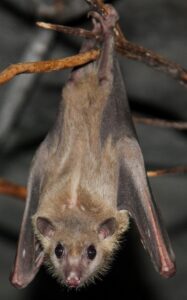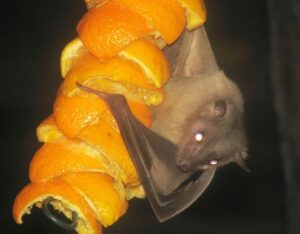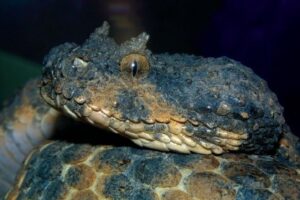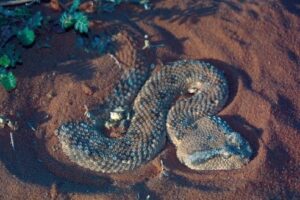Egyptian Fruit Bat or Egyptian Rousette
General Description
|

Credit: Lietuvos zoologijos sodas |
- Its wings are of a darker brown than its body and the wing membranes attach to the leg at the first toe.
- Males and females have similar coloration.
- The bat is well adapted to seeing in low light and possesses a highly developed sense of smell.
- Its eyes are large and well-developed, while its ears are considered medium-length.
Life Cycle and Common Characteristics
- Females give birth to only one offspring, on average, after a gestation period of 105–120 days.
- True to their name, these nocturnal mammals feed almost exclusively on soft fruits, such as dates, apples, and apricots.
- These bats are highly social species and live in colonies with thousands of other bats.
- Young bats cling to the female for about 3 weeks, until they can hang from branches on their own, and begin flying after 3 months.
- The bat has two breeding seasons: the first is from April to August, while the second season is from October to February.
- Females typically give birth to only a single offspring each year (called a “pup”), but twins are occasionally born, after a gestationperiod of around 115 to 120 days.
- The female carries the pup until it is six weeks old, which is when it can hang in the roost on its own.
- Offspring typically stay with the same colony as the parents for their entire lives.
- The average lifespan ranges from 8 to 10 years.
Damages and Medical Implications
|

Credit: Arpingstone
|




